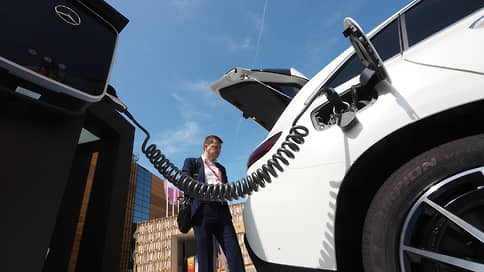The government will allow stations for electric vehicles to abandon the Japanese standard
[ad_1]

The government will review the configuration of subsidized charging stations for electric vehicles: now they will no longer need to be equipped with the outdated CHAdeMO connector (used on the Nissan Leaf). The European standard CCS2 and the Chinese GB/T will become mandatory. Analysts believe that this is logical given the widespread availability of electric vehicles with these types of charging – cars with CCS2 are officially sold in the Russian Federation, but a large number of cars with GB/T come through parallel imports.
According to Kommersant, the government again wants to revise the order of the Ministry of Industry and Trade No. 1776, which defines the requirements for subsidized fast charging stations for electric vehicles. Historically, electric vehicles have different types of connectors for charging from a station: the most common in the world is the European standard CCS2, in China – GB/T, in Japan – CHAdeMO. The latter was installed on early models, including the Nissan Leaf, and is now less popular.
The current version of the order requires that the station be equipped with three connectors, where one with a GB/T connector and one with a choice of CCS2 or CHAdeMO are required. According to Kommersant, the government wants to make only connectors with CCS2 and GB/T mandatory, and the operator will determine the third connector independently. “The changes being made are aimed at optimizing charging station configuration options in accordance with the current conditions of the electric vehicle fleet in the regions where electric charging stations are located,” the Ministry of Industry and Trade explained to Kommersant.
In the summer of 2022, the government launched a program to subsidize the installation of fast EPS. The maximum subsidy for the operator is 60% of the cost of the station, but not more than 1.86 million rubles. In 2022, under the support program, 493 fast electric filling stations were installed, and in 2023 – another 712, with plans for 2024 – 1.1 thousand electric filling stations.
The Ministry of Industry and Trade and market participants have been discussing the requirements for subsidized EPS for several years. At the end of 2023 and the beginning of 2024, discussions resumed: it was proposed to reduce the number of connectors to two, sources tell Kommersant. Such a measure could have led to a reduction in investor costs for the purchase of Russian EPS, but the idea was rejected. According to Kommersant’s interlocutors, Russian EPS manufacturers were strongly against the relaxations. According to market players, now one Russian-made EPS costs up to 4 million rubles. Chinese analogues are two or three times cheaper, notes Green Drive CEO Sergei Yakovlev.
Sergey Udalov from Avtostat notes that the GB/T connector will continue to remain relevant due to the active supply of cars from China. In general, CCS2 and GB/T are the most popular connectors on the market. In 2023, 14.09 thousand new electric vehicles were sold in the Russian Federation, Autostat calculated. The top 5 sales included Chinese Zeekr, which is not officially represented in Russia (market leader; 3.7 thousand units), as well as Volkswagen and Tesla. In addition to them, the top Evolute of Lipetsk Motorinvest (about 2 thousand units), created on the basis of Chinese models, as well as Voyah (also imported by Motorinvest).
Cars officially supplied and manufactured in the Russian Federation are traditionally equipped with a CCS2 connector. Cars imported through parallel imports are equipped with a Chinese connector, says Avtodom CEO Andrei Olkhovsky, pointing out that CCS2 or a double Europe / China connector can be on cars that are supplied from China for the European market. Director of Avilon Electro Sergei Melyukh notes that in the premium segment, most electric vehicles are sold with a GB/T port. “Zeekr, Avatr, Lotus, HiPhi are not yet equipped with other ports,” he confirms.
Sitronics Group advisor Armen Safaryan says freeing investors from the obligation to install the CHAdeMO connector will provide more flexibility. During the operation of the stations, it became obvious that in a number of regions the outdated CHAdeMO standard is not popular. Thus, in the Sitronics Electro network, about 45% of the number of charging sessions are on GB/T, 42% on CCS2. For Green Drive, the GB/T standard accounts for 60–70% of the total number of charging sessions, up to 27% for CCS2, and for CHAdeMO less than 5%. Sergey Yakovlev notes that station operators in countries other than Japan have stopped installing new EPS with CHAdeMO connectors from 2021–2022. In his opinion, the fleet of used Japanese electric vehicles in the Russian Federation can be comfortably charged at existing fast-type electric charging stations.
[ad_2]
Source link





